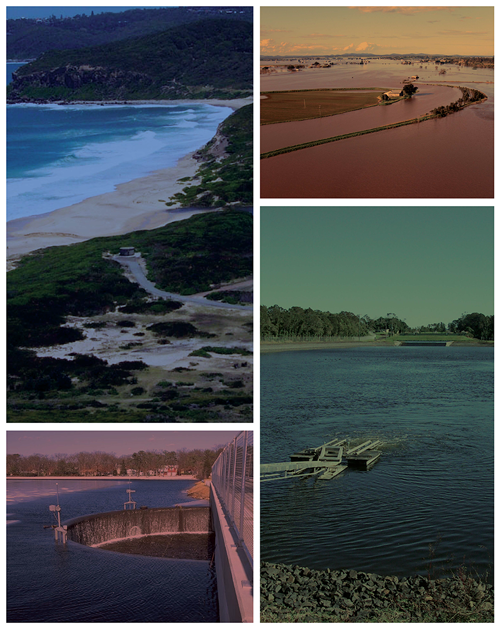Project Updates
A number of ARR projects will be presenting papers on project outcomes at the upcoming Hydrology and Water Resources Symposium (Sydney 19-22nd Nov). For more information visit www.hwrs2012.org.au
Project 10 and 15 (People Safety and Flow around buildings)
The final seminar on Flow around buildings and People Safety will be held at the 19th Queensland Water Symposium on 27-28 Sep in Brisbane. A large number of the profession have attended seminars held in Hobart, Perth, Melbourne, Newcastle, Darwin, and Sydney earlier this year.
Project 18 (Interaction of Coastal and Riverine flooding)
Flooding in the lower reaches of many coastal catchments can result from runoff generated by an extreme precipitation event occurring over the catchment, and/or elevated tail water levels attributable to a combination of high astronomical tide and storm surge. In many cases these flood-producing processes are the result of common meteorological conditions, with elevated storm surges being more likely to occur on days with extreme inland precipitation than on other days. This issue, referred to as joint dependence, can result in higher flood levels compared to the case where these processes are independent. The stage 2 report for Project 18 (Interaction of Coastal and Riverine Flooding) has been released for industry comment and is now available on the ARR webpage. http://www.arr.org.au/Website_links/ARR_Project18_Stage2_Report_Final.pdf
This report presents the outcomes of a pilot study into the application of statistical joint probability methods on extreme rainfall and storm surge in the coastal zone, with a view to providing guidance on the degree of interaction between these two physical process, as well as describing how this information should be applied for the estimation of flood risk along the Australian coastline. As part of this study, three separate areas of work were conducted: (1) the compilation of a large dataset of historical storm tide records at a number of locations along the Australian coastline, which when combined with the existing records of daily and sub-daily rainfall, can form the basis of an empirical study on the joint dependence between these variables; (2) a review of the statistical extreme value modelling literature with the objective of developing a model that can identify the strength of dependence between these variables; and (3) the identification of a methodology by which information on dependence between extreme rainfall and storm surge can be translated to a flood variable (such as a flood level or flow rate) at any location along the Australian coastline.
Report Review Process
The Revision team is committed to producing a quality project for industry. As part of the revision process has been developed where reports are reviewed by the Technical Committee as well as Australian and International reviewers. The following reports are undergoing the detailed review process prior to release to the industry for comment and are expected to be released soon.
- Project 4 – Continuous rainfall sequences at a Point -Stage 2 report – Expected to be released June/July
- Project 5 – Regional Flood Methods Stage 2 Report – Expected to be released June/July
- Project 11 – Blockage of Hydraulic Structures – Stage 2 Report
General Updates
Climate Change
Engineers Australia with the Assistance of BoM and CSIRO have developed their climate change research plan which outlines research necessary to define the impact of climate change on design rainfall, losses, temporal patterns for incorporation into the next edition of ARR and beyond.
Call for Reviewers
Those interested in reviewing projects should email [email protected] briefly describing which projects they are interested in reviewing and what qualifications/experience they have in those practice areas.
Australian Rainfall and Runoff has joined LinkedIn. Join the group for discussions and updates on the revision of Australian Rainfall and Runoff.



Leave a Reply